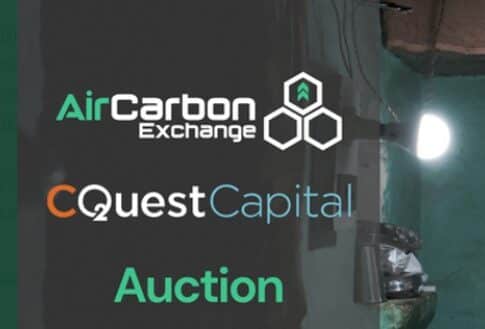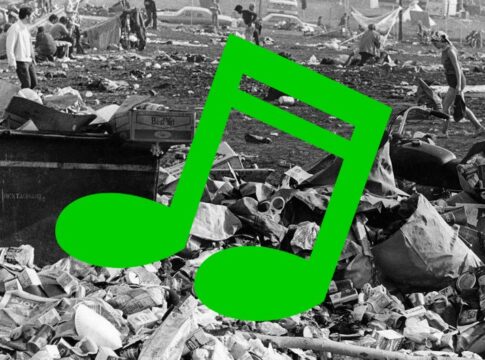Sovereign Carbon Credits – The New Rival in the Carbon Market
Despite issues faced by carbon credits in the market, Deutsche Bank managed to turn the tide through sovereign carbon credits from rainforest nations.
The main goal of sovereign carbon credits is to limit deforestation, making them into financial assets that empower rainforest nations to protect their forests and gain financial support in doing so.
Markus Müller, chief investment officer ESG for Deutsche Bank, said that:
“Nature has a value, and we need to express that. One way is through carbon credits, which link to nature that absorbs carbon. Therefore, the sovereign carbon credits are one tool to allow capital to flow to where it is needed to protect countries against the worsening climate and continue reducing emissions.”
What are Sovereign Carbon Credits?
The REDD+ mechanism established by United Nations Framework Convention on Climate Change (UNFCCC) produces sovereign credits. The aim is to incentivize developing nations to conserve their forests and reverse deforestation.
Forests are carbon sinks that sequester over 7 billion metric tons each year.
Sovereign credits from the REDD+ financing mechanism will push that figure up.
Countries have to meet strict requirements before they can be issued with sovereign credits.
Required data include data on a country’s forest reference level that are subject to rigorous process of technical review by the UNFCCC. A country must also have a national greenhouse gas inventory in place.
The proceeds from the sales of carbon credits will be used to further cut emissions and build infrastructure. As such, they are an asset class that are tradable on global carbon markets.
With sovereign carbon credits, rainforest nations can now keep their trees standing – vital to tackling climate change.
Sovereign Carbon Credits vs. Voluntary Carbon Credits
Scientists say that the planet has to cut annual carbon emissions by 2.5 Gigatons to limit global warming to 1.5°C. Otherwise damages due to climate change will cost trillions of dollars.
The year 2017 has seen the largest cost in economic damages of climate so far – $340 billion. While the world had lost $105 billion last year.
In 2021, voluntary carbon credits accounted for only 200 million tons of emissions reductions. That’s a small chunk of the total of 500 billion tons to be cut by 2050.
Currently, the voluntary carbon market gets a significant market share and spotlight.
Carbon credits traded in the VCM involve private deals that are outside the compliance carbon markets. In other words, they’re not regulated by the government.
Demand for credits in the VCM was estimated to grow exponentially as corporations strive to cut their footprint.
In fact, the BMO sees a potential growth to be 6.5x by 2030 and 17.4x by 2050, in comparison to 2020 VCM total traded volumes.
In 2021, the Ecosystem Marketplace reported that the real market value of the VCM is about $2 billion. The credits are generated both from nature-based and technological CO2 removal projects.
They count towards a person’s or an entity’s carbon reduction commitment.
On the other hand, sovereign carbon credits count towards a country’s Nationally Determined Contributions (NDCs). They’re derived from efforts that preserve forests and whose proceeds go back to the communities.
Some are wondering if sovereign and voluntary carbon credits can go hand-in-hand. Though there’s no clear cut answer, each type of carbon credit serves its own purpose.
Sovereign carbon credits are crucial to mitigating climate at the national and global levels. While voluntary carbon credits can help direct finance to critical carbon reduction projects.
The Gabon Sovereign Credits:
Gabon, second to Suriname as the most forested nation, will be issuing sovereign carbon credits worth 90 million tons.
The African nation is 88% rainforest that has avoided 1 billion tons of CO2 emission from 2010 to 2018.
As noted by Gabon’s environment minister, Lee White:
“If we cut the forest down, we lose the fight against climate change. We have created carbon credits through sustainable forestry.”
The credits will bring more value to the nation’s rainforests and make them worth up to $15 billion. But where will that huge money go?
Reinvesting back into the forests (10%)
Investing in health, education, and climate infrastructure (25%),
Investing in future generations (25%),
Debt service (25%), and
Rural development (15%)
Papua New Guinea will soon follow Gabon’s footsteps. 80% of its rainforest remains untouched.
Key Issues and Benefits
Just like the VCM, there are also some issues concerning the sovereign credit market.
One of them is ensuring that recipients of the credits – national governments – manage the money earned from the credit sales. How can they ensure that communities benefit from the proceeds?
Another issue is carbon leakage. It refers to the idea that countries save trees in one area but cut them down in other regions.
However, the concept of sovereign carbon credits follows a holistic approach in reducing emissions.
Following the REDD+ financial mechanism, Gabon must account for their forestry and make targets to prevent deforestation. Then the UNFCCC monitors the progress before validating and approving the credit issuance.
There are also advanced technologies such as satellites that make forest management public knowledge.
A REDD+ project developer remarked that:
“… developing nations are reducing emissions by hundreds of millions of tons. That is the pace and scale that the climate requires. Sovereign credits will spur this further.”
Firms in developed nations have voluntarily pledged to reach net zero emissions. But countries themselves also vowed to cut their CO2 footprint via the NDCs.
That means they will buy the credits, which are transferable among nations. Let’s say Gabon goes beyond its emissions targets, it can sell those assets to other countries that have problems meeting their goals.
One major benefit of sovereign carbon credits is that its value appreciates over time.
Companies don’t treat them as an expense. But they count toward their carbon accounting.
Also, they can allow countries to lower the cost of achieving their climate goals. That’s because emissions reductions happen at a national scale. The payments from carbon credits are then invested back to prevent threats to forests like illegal logging.
So before, rainforest nations have been shut from entering the carbon market. But Deutsche Bank’s decision has the potential to reverse that and Gabon’s upcoming credit issuance will be the first key to that change.
The post Sovereign Carbon Credits – The New Rival in the Carbon Market appeared first on Carbon Credits.



